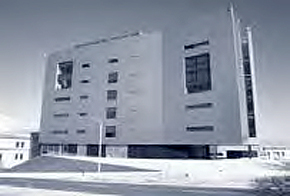
For the past fifty years, the world has been undergoing profound cultural changes. Primary among these is the redistribution of political power and cultural agency—that is, the power to act on one’s own behalf in the cultural arena. While perhaps not readily obvious, these changes have many implications for architecture.
While globalization threatens us with a kind of homogeneity, local circumstances are becoming more explicitly diverse through the disaggregation of power. Indigenous peoples, who have been systematically sidelined in their own lands, are regaining their voices as they refuse to remain on the cultural fringes any longer. Minority peoples who have been silenced or ignored are asserting their presence and exercising their rights. Through perseverance and a record of success, small political action groups and non-governmental organizations have gained legitimacy and presence.
The broadening of power brings with it not only a redistribution of political weight, but also an opening up of who has a voice in cultural and spatial production. Politics, cultural production, and the creation and control of space are now arenas for negotiation between these newly empowered groups and those who used to control them.
One of the most enduring activities of power—political, cultural and economic—is building. Monuments, palaces, governmental centers, corporate headquarters, temples, and even entire cities reflect the sensibilities and organization of power long after the individuals and entities that wielded them are gone. Architecture and architects are deeply embedded in this power structure. We provide our services to those who can pay us and to those who command the resources to build the expensive cultural artifacts we design.
This traditional relationship is now being disrupted in a world where the power to command architectural production is shifting, spreading out, and being actively transferred by architects themselves. In the 20th century, some architects began to use their skills to try to change the physical circumstances of those who could not afford their services. Sometimes, these efforts were supported by the government, as in the worker housing schemes in Europe in the 1920s. Other times, these efforts were initiated by architects themselves, like those who launched community design centers and provided pro bono services in the US from the 1950s on. Of perhaps greatest interest, however, in the past decade, architects have been repeatedly commissioned to design significant buildings for people who previously could not have afforded the opportunity. Through a series of political shifts, these people now have real cultural agency to act in their own behalf, to represent themselves in a larger context through building projects.
Examples include cultural centers and museums that have as a mission nurturing a local culture, revealing that culture to others from the global community, or reconciling aspects of cultural or political interaction. Such building programs are not, of course, as benign as they sound. Usually the projects are for institutions that explicitly address issues of inequality and historical disproportion, suffered at the hands of either colonizers or dominating cultures from Western Europe. Usually racism has been a key factor that must be recognized and addressed amid the cultural and political tensions. And usually the architects for these new places are at the very least educated in the framework of the white Western European culture that has been the primary source of the tension in the first place.
The architectural questions these situations raise are messy and difficult. There is no way to avoid the fact that the structures that house such institutions will be symbolic on many levels. Their mere existence is political, as are their form and expression. The buildings themselves become part of the process of telling more complete histories, of giving voice to the silenced, of reconciling historical victims and victimizers. They are also, of course, part of the ongoing processes of apology, guilt, restitution, reconciliation, and profound cultural change. The selection of architects for such projects, the strategies they use in design, and the materials and techniques of construction they employ are implicated as well.

Important recent buildings in such situations include the Tjibaou Cultural Centre in New Caledonia for the Kanak people, by the Renzo Piano Building Workshop; the Inari Sámi Museum and Northern Lapland Visitor Centre in Finland for the Sámi people, by Juhanni Pallasmaa; Sinte Gleska University for the Lakota people of South Dakota by RoTo Architects; and the new offices for the Southern Poverty Law Center in Montgomery, Alabama, by Erdy McHenry Architects.
As power continues to shift at all political and territorial scales, the demand for these kinds of buildings will increase. This demand provides a new arena for architects and, perhaps more importantly, an important, revitalized role in cultural production. As the architects who are engaged in this kind of work will attest, however, these projects are not to be taken on lightly. Just as the projects are unusual and unfamiliar, so are the client processes, decision-making systems, timelines, and values.
Author Lisa Findley, AIA, is an architect and architectural journalist who teaches at CCAC (California College of Arts and Crafts). She is a contributing editor for Architectural Record, is on the editorial board of arcCA, and has written for other publications, including World Architecture, Baumeister, and Architecture Australia. The following reflections are part of a book, Building Change: Architecture, Politics and Cultural Agency, due out March 2004 from Routledge. Research for Building Change is sponsored in part by the Graham Foundation for Advanced Studies in the Fine Arts.
Originally published 2nd quarter 2003, in arcCA 03.2, “Global Practice.”





